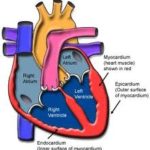By Ben Fuchs | Pharmacist Ben
One of the least well-known essential trace minerals is manganese. This metallic nutritional element, which derives its moniker from the Greek word for magic, is present in almost all diets in low concentrations. Although these days it is mostly used as an alloy in stainless steel for its rust protection properties, manganese’s essential role in human nutrition should not be overlooked.

Black-Eyed Peas Curry, rich in manganese. (akshayapatra.blogspot.com)
The average human body contains about 10 milligrams of manganese, mostly concentrated in the liver, bones and kidneys. While deficiencies of manganese are typically uncommon, its highly charged electrical nature make this critical mineral unstable to milling of grains and other modern food processing techniques. According to Dr. E. Blaurock-Busch of Trace Minerals International, patients being fed intravenously may also be at risk for manganese deficiency, although some say there is some controversy surrounding the inclusion manganese to parenteral protocols. High doses of Manganese have been associated with neurotoxicity and Parkinson’s disease-like symptoms and current opinion regards the addition of manganese to parental solutions as unnecessary.
What is not open to debate, however, is the issue of the loss of manganese due to soil depletion. An unfortunate by-product of modern agricultural technology, mineral impoverishment of farmlands must be considered as foods grown in soils with low levels of the silvery-grey essential nutrient may have their manganese content reduced.
Manganese is absorbed into the blood through the small intestine, so patients with a history of digestive distress may be at risk for manganese deficiency. Absorption of manganese may also be adversely affected by diets high in iron, magnesium, calcium, phosphorus and soy protein. Deficiencies of this important mineral may result in impaired growth, poor wound healing and other skin issues, as well as loss of hair color or reduced hair growth. Women with osteoporosis have been shown to have low levels of plasma manganese. And, it’s been known for almost 50 years that many epileptics are at risk for manganese deficiency.
Manganese functions as a critical co-factor for several vitamins. Under deficiency conditions, Vitamin C and some of the B-vitamins, including Vitamins B1, biotin and choline cannot be used efficiently. Manganese also has a function in the synthesis of fatty acids and cholesterol. And, several reports indicate involvement of manganese in the synthesis of steroid hormones such as estrogen, progesterone and testosterone. Manganese may also play an important role in the health of diabetics.
In their chapter in the highly regarded textbook, “Manganese in Health and Disease”, Doctors Baly, Walter, Jr., and Keen suggest a relationship between manganese and carbohydrate metabolism. One anecdotal report which they discuss involved the case of an insulin resistant diabetic patient who dramatically reduced his blood glucose levels from 350 mg/dl to 100 mg/dl by drinking manganese containing alfalfa tea. Further research showed that intravenous manganese chloride also lowered blood glucose levels rapidly.
Manganese functions as a structural constituent and activator of numerous enzyme systems, including those involved with energy production, protein metabolism and detoxification. And, its link to enzymes associated with lipid metabolism, are responsible for its aforementioned importance in helping the body maintain adequate levels of cholesterol and fatty acids and steroid hormones. Finally, manganese is an important actor in the production of enzymes involved in collagen synthesis and thus may have a part to play in anti-aging nutrition.
The best manganese-containing foods include liver and other organ meats. Pecans and almonds, brown rice, pineapples, and navy beans are good vegetarian sources of manganese and teas of all kinds are especially good beverage sources. Manganese is also available in supplemental fashion and most often found in combination with other nutrients in joint health and bone-building formulations.
History
The origin of the name manganese is complex. In ancient times, two black minerals from Magnesia (located within modern Greece) were both called magnes from their place of origin, but were thought to differ in gender. The male magnes attracted iron, and was the iron ore now known as lodestone or magnetite, and which probably gave us the term magnet. The female magnes ore did not attract iron, but was used to decolorize glass. This feminine magnes was later called magnesia, known now in modern times as pyrolusite or manganese dioxide. Neither this mineral nor elemental manganese is magnetic. In the 16th century, manganese dioxide was called manganesum (note the two Ns instead of one) by glassmakers, possibly as a corruption and concatenation of two words, since alchemists and glassmakers eventually had to differentiate a magnesia negra (the black ore) from magnesia alba (a white ore, also from Magnesia, also useful in glassmaking). Michele Mercati called magnesia negra manganesa, and finally the metal isolated from it became known as manganese (German: Mangan). The name magnesia eventually was then used to refer only to the white magnesia alba (magnesium oxide), which provided the name magnesium for the free element when it was isolated much later. [Wikipedia]














